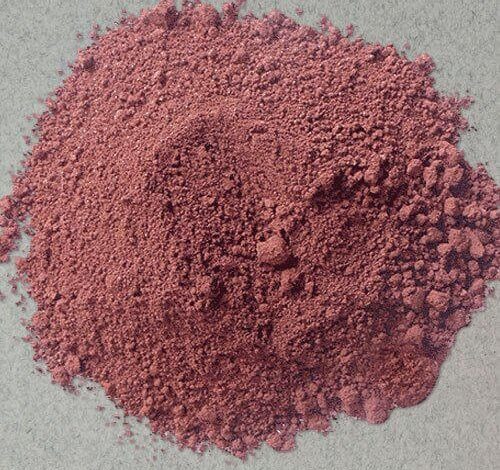Revolutionizing Energy Storage
Introduction to Hematite in Battery Technology
In the evolving field of energy storage, hematite (Fe₂O₃), a naturally occurring form of iron oxide, is gaining significant attention. With its abundant availability, low cost, and unique electrochemical properties, hematite presents an exciting potential for next-generation battery technology. In this article, we will explore the role of hematite in battery technology, its advantages, and its potential to transform the energy storage landscape.

The Role of Hematite in Energy Storage
Hematite’s most promising application in energy storage is as an anode material in lithium-ion batteries (LIBs). Traditional battery technologies rely heavily on materials like graphite for the anode, but hematite brings some key advantages:
- High Theoretical Capacity: Hematite offers a much higher theoretical capacity compared to graphite. While graphite typically provides a capacity of around 372 mAh/g, hematite can reach up to 1007 mAh/g. This higher capacity could significantly increase the energy density of lithium-ion batteries.
- Environmental Benefits: As a naturally abundant and non-toxic material, hematite reduces the environmental impact of battery production. Its widespread availability also helps mitigate the supply chain risks often associated with other materials like cobalt and nickel.
- Cost Efficiency: Hematite is a low-cost material, making it an attractive alternative for large-scale battery production. Its affordability could drive down the overall cost of batteries, paving the way for more accessible and affordable energy storage solutions.
https://iranmineral.net/hematite-pigment…nts-and-coatings/
Challenges Facing Hematite in Battery Applications
While hematite shows promise, it also presents several challenges that need to be addressed for widespread adoption in battery technology.
- Volume Expansion: One of the main issues with hematite is its tendency to expand and contract significantly during charge and discharge cycles. This volume expansion can lead to material degradation, reducing the battery’s lifespan.
- Poor Conductivity: Hematite has relatively poor electrical conductivity compared to traditional materials like graphite. This low conductivity can result in slower charging times and reduced overall performance.
- Cycling Stability: Hematite-based anodes may suffer from poor cycling stability due to structural changes that occur during repeated charging and discharging cycles. This challenge requires innovative solutions to improve the long-term stability of hematite-based batteries.
https://iranmineral.net/iran-mineral-exporters-volume/
Advancements in Hematite-Based Battery Technology
Ongoing research is focused on overcoming the challenges associated with hematite in batteries. Here are some of the advancements being made:
- Nano structuring: By designing hematite at the nanoscale, researchers can enhance its performance, reduce volume expansion, and improve its cycling stability. Nanostructured hematite can also improve ion and electron transport, addressing its conductivity issues.
- Composite Materials: Combining hematite with other materials, such as carbon or graphene, can enhance its conductivity and mechanical stability. These composite materials show promise in enhancing the overall performance of hematite-based batteries.
- Electrolyte Optimization: Innovations in electrolyte design can also play a crucial role in improving the efficiency and lifespan of hematite-based batteries. Electrolytes that minimize the formation of solid-electrolyte interphases (SEI) can reduce the degradation of hematite anodes.
- https://iranmineral.net/different-types-of-industrial-salt/
Future Outlook for Hematite in Battery Technology
The future of hematite in battery technology looks promising, especially as the demand for more sustainable, affordable, and high-capacity energy storage solutions continues to grow. Hematite’s abundance and cost-effectiveness position it as a strong candidate for large-scale battery applications, particularly in the electric vehicle (EV) and renewable energy sectors.
As research progresses, addressing the key challenges of volume expansion, conductivity, and cycling stability will be crucial. With continued advancements in materials science, hematite could play a pivotal role in revolutionizing battery technology, leading to more efficient, durable, and environmentally friendly energy storage solutions.

